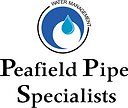The intricate network of pipelines that spans across continents plays a vital role in transporting essential resources such as oil, gas, and liquids. However, ensuring the integrity of these pipelines is of paramount importance to prevent accidents, leaks, and environmental disasters. This is where pipeline pressure testing comes into play. Pressure testing is a crucial procedure that evaluates the ability of a pipeline to withstand its operating pressure, ensuring its safety and reliability. To standardize and guide these testing processes, various industry-specific standards and guidelines have been established. This article delves into the significance of pipeline pressure testing, the key components involved, the existing standards and guidelines, challenges, and best practices to ensure safe testing procedures.
The Significance of Pressure Testing in Pipeline Integrity
Pipeline accidents can lead to catastrophic consequences, including environmental damage, loss of life, and economic setbacks. Pressure testing serves as a preventive measure, aiming to identify weaknesses and potential failure points in pipelines before they become critical issues. Beyond preventing accidents, pressure testing is a regulatory requirement in many jurisdictions, ensuring that operators comply with safety standards and maintain a high level of operational integrity. Moreover, the process minimizes the environmental impact by reducing the likelihood of leaks that could harm surrounding ecosystems.
Key Components of Pipeline Pressure Testing
The pressure testing process involves several essential components, each contributing to the comprehensive evaluation of a pipeline’s integrity. Pre-test preparation includes carefully selecting the test section, isolating it from the rest of the pipeline, and meticulously cleaning and purging it to eliminate any contaminants or residues. The actual test procedures can be classified into hydrostatic pressure testing and pneumatic pressure testing. Hydrostatic testing involves filling the pipeline with a liquid test fluid and applying pressure for a specified duration. Pneumatic testing, on the other hand, utilizes compressed air or gas to create pressure within the pipeline.
During testing, monitoring and measurements are crucial. Pressure gauges and sensors are strategically placed along the test section to capture real-time pressure data. This data is recorded and analyzed to ensure that the pipeline meets the specified pressure criteria. Post-test activities involve a thorough inspection for leaks and failures and the proper depressurization of the pipeline to safely conclude the test.
Pipeline Pressure Test Standards and Guidelines
To ensure consistency and safety in pressure testing procedures, various industry-specific standards and international guidelines have been established. For gas pipelines, the American Society of Mechanical Engineers (ASME) B31.8 standard provides guidance on pressure testing protocols, while ASME B31.4 focuses on liquid pipelines. Internationally, the ISO 13849 standard emphasizes pressure testing safety, and ISO 10400 outlines well integrity testing methods. Regulatory bodies such as the Pipeline and Hazardous Materials Safety Administration (PHMSA) and the European Pipeline Research Group (EPRG) enforce compliance with these standards. Additionally, national bodies like the National Energy Board (NEB) contribute their own set of guidelines.
Factors Influencing Pressure Test Parameters
Pressure testing parameters are influenced by several factors, including pipeline material and design, fluid type and temperature, environmental conditions, and the pipeline’s age and historical performance. Different materials and designs can require varying pressure levels, while the type of fluid being transported affects the compatibility of the test fluid. Environmental conditions, such as temperature variations, impact the behavior of materials under pressure. The age of the pipeline and its past performance can help determine the frequency and intensity of pressure testing required.
Challenges and Risks in Pressure Testing
While pressure testing is essential, it comes with its own set of challenges and risks. Overpressurization, where a pipeline is subjected to pressure beyond its design limits, can lead to structural damage and failure. Older pipelines may be more susceptible to damage during testing due to their condition. Human error, inadequate safety measures, and the use of improper test fluids can all pose risks. Additionally, the environmental impact of test fluids, if not chosen carefully, can be detrimental to ecosystems.
Best Practices and Guidelines for Safe Pressure Testing
To mitigate the challenges and risks associated with pressure testing, following best practices and guidelines is crucial. Pre-test safety measures, including proper personal protective equipment and well-defined emergency response plans, are essential. Calculating the correct test pressure limits and considering factors such as fluid density, pressure stabilization time, and pressure decay analysis are fundamental to accurate testing. Post-test inspections and reporting, employing leak detection methods and meticulously documenting results, ensure that the integrity of the pipeline is upheld.
Case Studies: Successful Pressure Testing Implementation
Real-world examples highlight the efficacy of pressure testing in maintaining pipeline integrity. The Trans-Alaska Pipeline System, spanning 800 miles through challenging environments, has implemented rigorous pressure testing procedures to ensure continuous safe operation. The Nord Stream 2 Pipeline, connecting Russia to Germany across the Baltic Sea, relied on stringent pressure testing methods to meet international standards. Similarly, the Keystone XL Pipeline adhered to thorough pressure testing to ensure its safe transportation of crude oil across borders.
Future Trends in Pipeline Pressure Testing
Advancements in technology are poised to revolutionize pipeline pressure testing. Automation and data analytics are being integrated into testing processes, allowing for real-time monitoring and analysis. This not only enhances accuracy but also reduces the risk of human error. Additionally, the industry is moving toward the development of eco-friendly testing fluids that minimize environmental impact while maintaining the effectiveness of pressure testing.
Conclusion
In the intricate world of pipeline transportation, ensuring integrity is non-negotiable. Pipeline pressure testing, backed by robust standards and guidelines, plays a pivotal role in upholding safety, preventing accidents, and safeguarding the environment. By understanding the key components of pressure testing, adhering to established standards, and implementing best practices, operators can continue to transport essential resources with confidence and responsibility, fostering a future of secure and sustainable pipeline operations.
